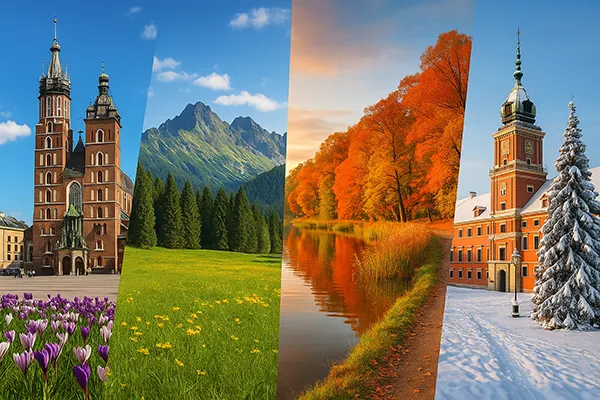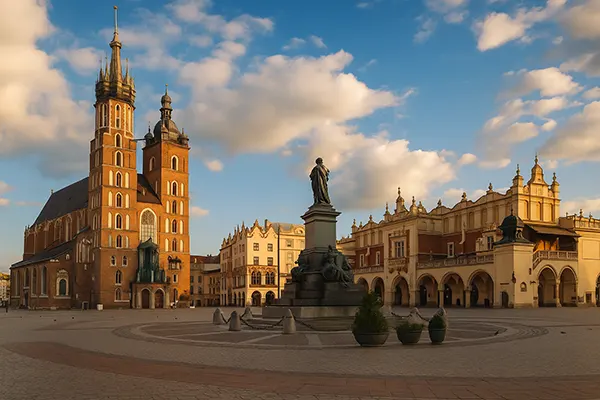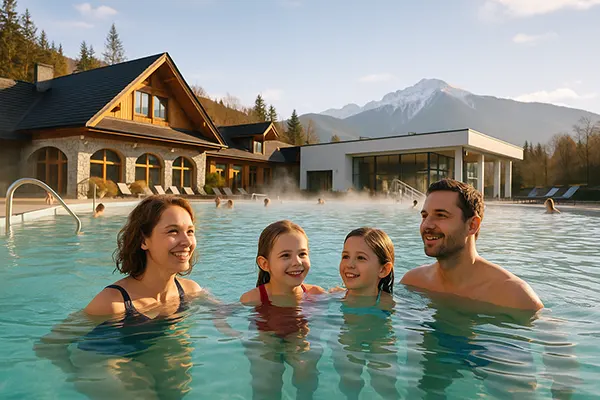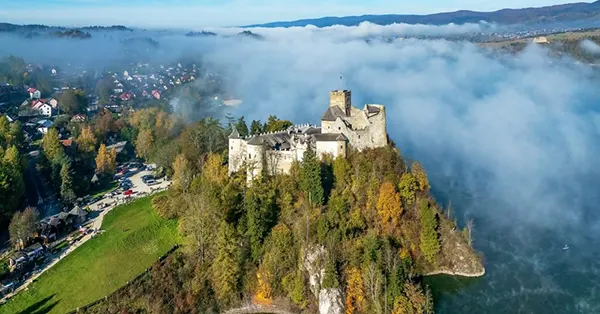
Seasonal travel calendar: when to visit Poland for better prices and fewer crowds
Planning a journey to Poland can feel far more comfortable when you understand how the country’s travel seasons shift throughout the year. Demand for accommodation, transport and local experiences changes noticeably between peak, shoulder and low seasons, and these fluctuations influence both prices and the overall atmosphere. Travellers who prefer calmer streets, shorter queues and balanced budgets increasingly choose less obvious times of the year, when Poland remains just as appealing yet significantly more accessible. Considering the country’s varied climate and a rich calendar of cultural events, selecting the optimal month for specific regions or activities becomes an important part of trip planning.
Spring shoulder season: March to early June
The period from March to early June is widely regarded as a favourable time to visit Poland without facing summer crowds. Cities such as Kraków, Gdańsk and Wrocław gradually emerge from winter, offering milder temperatures and blossom-filled parks, but tourism has not yet reached its peak. Accommodation costs remain moderate, and domestic travel is less intense, especially before the long May holidays. By choosing mid-week stays during this period, visitors typically secure more availability at reasonable rates.
Another advantage of spring is the higher likelihood of experiencing cultural events without overwhelming foot traffic. Easter traditions, early music festivals and local markets operate actively but do not attract the same level of international tourism as high-season celebrations. This environment allows travellers to explore museums, historical districts and open-air attractions without long waiting times. Public transport also tends to be less crowded compared to summer months, particularly on popular intercity routes.
Weather can still be variable during spring, so flexible planning helps. Light rain or cooler evenings are common, especially in the northern coastal areas. However, most attractions function normally, and national parks begin reopening seasonal trails. For travellers interested in hiking or city breaks, this period offers a balanced combination of comfortable conditions and cost-effective options.
Best spring experiences and price dynamics
Accommodation prices in spring remain noticeably below the rates observed from late June to August. According to 2025 travel market analyses, average hotel costs in major cities increase by approximately 25–35% once the peak season begins. In contrast, springtime bookings often include promotional rates or early-season discounts. Public transport and regional rail services also maintain standard pricing without the additional demand-driven surges seen in summer.
From an experience perspective, spring is particularly suitable for travellers who prefer pleasant but cooler temperatures while visiting national heritage sites. Destinations such as the Tatra Mountains, Masurian Lake District and Białowieża Forest remain less busy, improving access to guided tours and nature trails. While some mountain paths may still have snow at higher elevations in March, lower-altitude areas offer enjoyable hiking and photography opportunities.
For cultural travellers, spring provides excellent conditions to explore Poland’s historical architecture. Museums, cathedrals and castles receive fewer tour groups, and many walking tours operate with smaller participant numbers. This results in more personalised experiences and reduced waiting times. Combined with manageable transport flows, spring stands out as one of the most practical and calmer seasons to visit.
Autumn value season: mid-September to November
The period following the summer holidays brings notable reductions in tourist numbers while maintaining favourable travel conditions. From mid-September, school terms resume across Europe, significantly decreasing international and domestic travel flows. Popular destinations such as Zakopane, Poznań and the Tricity area become more peaceful, and hotel prices gradually decrease after the high-season surge. Autumn also offers a distinct atmosphere, with vibrant foliage in parks and forests enhancing sightseeing and outdoor exploration.
Weather during early autumn is typically mild, with daytime temperatures ranging from 14°C to 20°C depending on the region. This provides ideal conditions for city walks, cycling routes and exploring historical sites. Even in late October, many attractions remain fully operational, though visitors should expect cooler temperatures and shorter days. Despite this, the overall travel environment remains comfortable, and the drop in crowd levels makes iconic places more pleasant to navigate.
The financial benefits of travelling in autumn become particularly visible in larger cities, where accommodation providers adjust prices to attract off-season visitors. Flight availability from major European hubs also tends to improve, creating opportunities for economical weekend getaways. Travellers focused on cultural experiences will find a rich calendar of events, from theatre premieres to food festivals, many of which attract mainly local audiences rather than large tourist groups.
Advantages of off-season travel and what to consider
Autumn is known for offering some of the best value for urban tourism in Poland. Accommodation providers frequently release seasonal deals, and the competition for mid-week stays remains much lower than in summer. Restaurant reservations and entry to popular attractions are easier to secure, and queues at major landmarks are significantly reduced. This season suits travellers who prefer deeper cultural exploration without the pressure of peak-season crowds.
However, Poland’s weather in late autumn can become unpredictable. Rain and colder winds are more common, particularly in northern regions. Travellers should pack appropriately and remain flexible with outdoor plans. Even with these changes, major transport routes operate reliably, and most museums, theatres and galleries continue functioning at full capacity, making it easy to adapt itineraries.
For those seeking scenic landscapes, autumn offers exceptional opportunities. Mountain ranges, forests and rural regions display vivid colours throughout October, drawing photographers and nature enthusiasts. Since these destinations receive fewer visitors during this time, travellers benefit from quieter hiking paths and more peaceful surroundings without the premium prices associated with summer tourism.

Winter low season: December (except holidays) to early March
Apart from the Christmas and New Year period, which attracts significant tourism, winter in Poland is generally considered the lowest travel season. Prices for accommodation and domestic transport fall noticeably, especially in January and February. Many travellers choose this time for budget-friendly city visits, as rates for hotels, guided tours and cultural events tend to be at their annual minimum. The absence of major tourist crowds creates a more relaxed pace for exploring museums, galleries and historical districts.
Weather conditions during winter vary by region. Northern and eastern areas experience colder temperatures and possible snowfall, which can enhance the appeal of certain destinations. Cities such as Warsaw and Łódź adapt well to winter conditions, offering numerous indoor attractions, public exhibitions and culinary venues. Meanwhile, mountain regions like the Tatras attract winter-sports enthusiasts, though these areas can see higher demand during holiday weeks and school breaks.
Travellers who appreciate atmospheric cityscapes will find winter an appealing period for photography and cultural experiences. Fog-covered streets, illuminated squares and seasonal decorations—particularly in early December and January—create a distinctive environment. Museums and heritage sites remain accessible, often with significantly reduced queues. Despite the colder climate, the affordability and calm atmosphere make winter a strategic season for visitors prioritising value and comfort.
How winter helps reduce costs and what changes to expect
Winter remains the most cost-efficient period for travel across the country, aside from the peak holiday dates. Hotel prices in January can be 30–45% lower than in midsummer, and domestic flights and intercity trains often provide competitive fares. For those planning extended stays, winter promotions introduced by accommodation providers can significantly reduce total travel expenses. This makes the season particularly attractive for budget-conscious travellers.
However, visitors should consider practical aspects such as shorter daylight hours and lower temperatures. Many outdoor attractions, particularly in rural regions, operate with limited accessibility during heavy snowfall. Nonetheless, Poland’s infrastructure remains reliable, and urban areas maintain regular transport services throughout the season. Indoor cultural programmes are extensive, offering a wide range of exhibitions, concerts and seasonal performances.
For travellers seeking peaceful city exploration or cost-effective weekend breaks, winter is often the most convenient option. The absence of large tourist flows allows for more spontaneous planning, easier reservations and a calmer atmosphere. Combined with the country’s well-developed cultural agenda, winter proves that even the coldest months can offer rewarding and economical travel opportunities.



